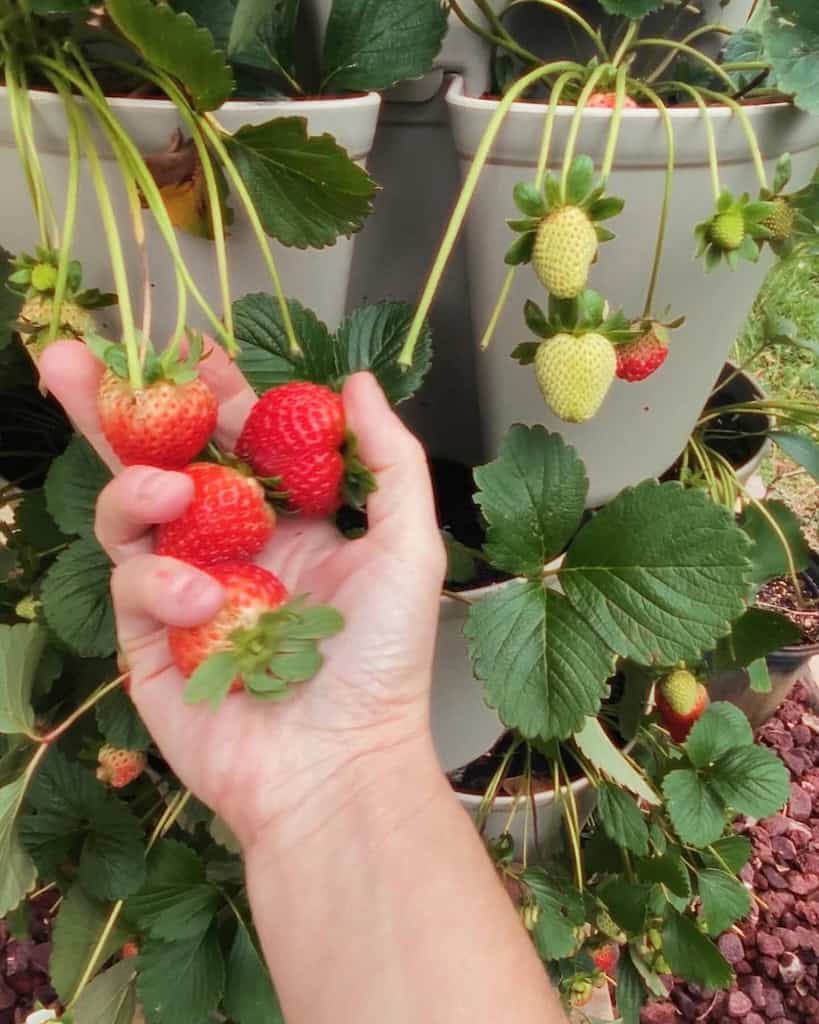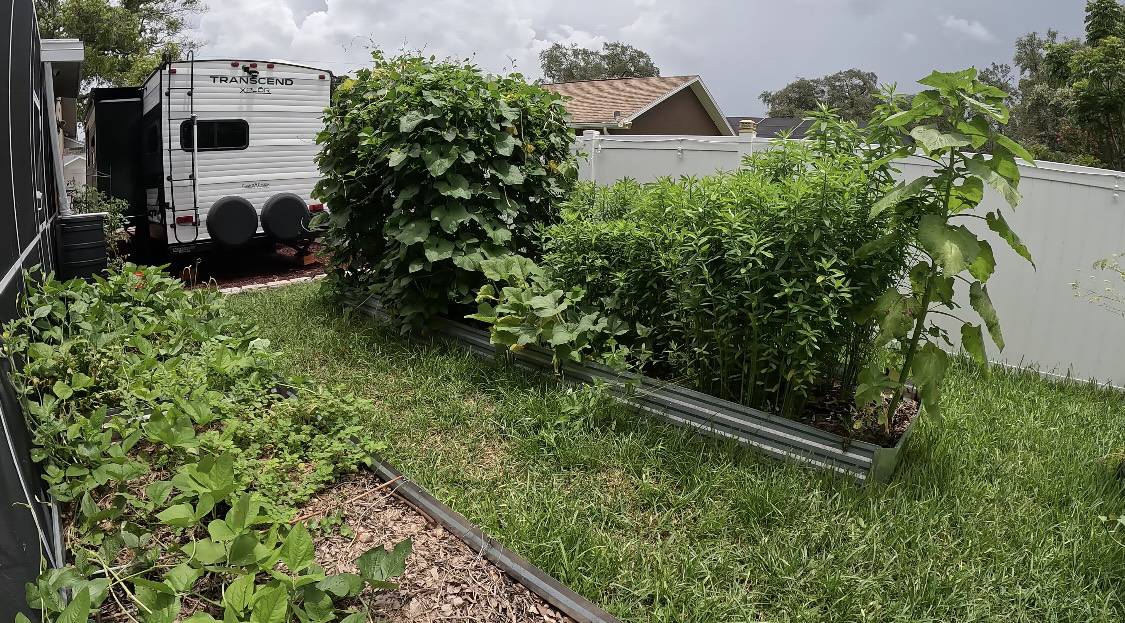Last Updated on October 24, 2024 by Homegrown Florida
Winter might seem like an off-season for gardening in many places, but here in Florida, it’s prime time! The cooler months bring relief from the intense summer heat and offer the perfect conditions for growing a variety of vegetables. Plus, the pest pressure drops significantly, making it one of the best times of year to garden in this region. Today, I’m excited to share what I’m growing in my winter garden, along with some of the varieties I’ve found to work well in our unique climate. Let’s dive into the list of crops and how I’m tackling the challenge of growing in Florida’s mild winters.
Why Winter Gardening in Florida is Ideal
Before we get into the specific plants, let me quickly explain why winter is such a great time for gardening in Florida. We get very few frosts — in fact, last winter, I didn’t get a single one! This means we can grow all those classic cool-weather crops like broccoli, kale, and carrots without worrying about freezing temperatures.
Even better, pests are much less of an issue in winter. In Florida’s hot months, we deal with pests year-round. But during winter, the pest population dwindles, giving our crops a better chance to thrive without constant battling. So, let’s talk about what I’m growing this winter!
Brassicas
Brassicas thrive in cooler temperatures, and I always make room for them in my winter garden. They’re classic winter crops, and I’ve found a few varieties that perform especially well in Florida.
Broccoli

One of my all-time favorite broccoli varieties is Arcadia, but sadly, it’s no longer widely available. I got my seeds on Amazon years ago, and they’ve done wonderfully in the heat, producing large heads and loads of side shoots. Unfortunately, Arcadia seeds are hard to come by, so this year, I’m experimenting with Green Magic and Imperial, both from Johnny’s Selected Seeds. These hybrids are supposed to be heat-tolerant, and while I haven’t seen many Florida growers rave about them, they’ve performed well in slightly cooler states like Georgia and North Carolina. Fingers crossed they do just as well in my garden. If hybrids aren’t your thing, Waltham is a reliable open-pollinated alternative.
Cabbage

For cabbage, I’m growing Early Jersey Wakefield, a conical-shaped, fast-growing variety. I love it for its reliable production and the way it fits nicely in tight garden spaces. Alongside it, I’m growing Savoy cabbage, which has those beautiful crinkly leaves. The Savoy takes longer to mature but is more heat-tolerant, so I treat it as a late-season crop after harvesting the Jersey Wakefield.
Brussels Sprouts
Brussels sprouts are tricky to grow in Florida because they prefer long, cold seasons, but I’ve had some success with Jade Cross, a heat-tolerant variety. It produces smaller but tasty sprouts. This year, I’m testing Green Gem, which matures in about 85-95 days — relatively fast for Brussels sprouts. I’m hoping that its speed, combined with heat tolerance, will yield better results.
Kohlrabi

I’ve tried both the purple and green Vienna varieties of kohlrabi, but last year, I switched to Konan, a hybrid from Johnny’s Seeds. Konan produced larger, tastier bulbs without becoming woody too quickly, which is something I struggled with when growing the Vienna varieties.
Cauliflower
My go-to cauliflower has been Snowball Y Improved, which I get from FlGardening. It’s been consistent, with good self-blanching leaves that protect the white head from sun damage. But last year, I grew Purple of Sicily for some extra color, and while it was stunning, the plants took up a lot of space. This year, I’m trying Clementine, an orange cauliflower that should add some beautiful color to the garden.
Carrots, Radishes, and Beets
Carrots

New Kuroda is my favorite carrot variety — it’s heat-tolerant, stores well, and produces big, sweet carrots. I’m also growing Kyoto Red and Cosmic Purple, both of which add vibrant colors to my winter harvest.
Radishes
This year, I’m growing Rover and Cherry Belle, both reliable radishes that thrive in our climate. I’ve seen Cherry Belle do exceptionally well at local farmer’s market gardens, so I’m confident it will perform in my garden too.
Beets

After years of struggling with beets, I finally had success last year with Early Wonder Tall Top and Avalanche. They grew well with a little extra nitrogen, which goes against typical beet-growing advice, but it worked for me! I’m sticking with these varieties again this year.
Lettuce, Kale, and Greens
Lettuce

I’m going all-in with Salanova lettuce this year. It’s heat-tolerant, sweet, and produces consistently throughout the season. I’m growing the Green Incised, Green Butter, and a mix of red and green varieties. Hansen Improved Crisphead is another variety I’m experimenting with — it’s like a loose-leaf iceberg and grew surprisingly well last year.
Kale
Kale adds a nutritious punch to our winter meals, and I have grown three varieties in the past. Curly kale, not my favorite for taste but perfect for ornamental purposes. Dinosaur Kale, or Lacinato, boasts a milder flavor and is excellent for cooked dishes. Red Russian Kale offers a balance between frilliness and a less peppery taste, making it a versatile addition to the garden. Last year, I fell in love with Prism Kale, which I found as a start at a big box store. It handled the heat without becoming bitter and kept us in kale all season. I couldn’t save seeds from it, but I’ll definitely be buying it again.
Collard Greens
I’m growing the classic Georgia Southern collard greens, which can handle the heat and even survive through the summer if cared for properly. They’re like perennials in my garden, bouncing back once cooler temperatures arrive.
Peas and Beans
Peas

For peas, I’m growing my usual Sugar Snap and Oregon Snow Peas, but I’m also planting Tall Telephone, a shelling pea that produced a bumper crop last year. These peas are fantastic for winter, and I’m excited to grow even more this year.
Beans
I’m growing a mix of bush and dry beans this winter. Provider, Contender, and French Petite Green Beans are my bush beans of choice, and for dry beans, I’m growing Cranberry, Red Beans, Cannellini, and Light Red Kidney Beans. Beans thrive in our winter garden and produce quickly.
Onions and Garlic

No winter garden is complete without the aromatic delights of onions and garlic. Granex onions, a sweet yellow variety akin to Vidalia, dominate my onion patch. For garlic, I have a separate bed, as they are a must-grow for me. Garlic offers layers of flavor and a multitude of culinary uses. My favorite variety is Inchelium Red.
Other Winter Crops
Celery
Growing celery in Florida can be tricky, but I’ve had some success with Utah Tall. Starting the seeds indoors helps, and this year I’m giving them another shot, starting them in my AeroGarden to avoid overwatering.
Potatoes

For potatoes, I’m sticking with Cal White and Golden Nugget varieties. Yukon Gold hasn’t performed well for me, so I’m switching it up. I’m also on the lookout for Russian Banana and Huckleberry Gold, but they’ve been hard to source.
Strawberries

I’m planting Chandler and Brilliance strawberries from bare roots. I’ve had better luck with actual plants in the past, but I’m giving bare roots another go this year, especially since I’ve had success growing strawberries in my GreenStalk. This year I purchased my bare roots from Practical Plants and they have done amazing. So much healthier than any other place I’ve purchased from before.
That’s the rundown of what I’m growing in my winter garden! Florida’s winter climate gives us a unique opportunity to grow a variety of crops, from cool-season favorites like broccoli and kale to hardy root vegetables and even beans. If you’re gardening in Florida or another warm climate, winter is the perfect time to get out in the garden and grow some veggies. Happy gardening!


